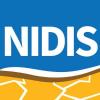Advancing the Use of Drought Early Warning Systems in the Upper Colorado River Basin
For the past several years, the NIDIS Upper Colorado River Basin (UCRB) Drought Early Warning System (DEWS), led by the Colorado Climate Center, has provided regular webinars and a web resource to convey climate and water information to stakeholders throughout the basin, to help them anticipate and respond to droughts.
The DEWS service has been well received by users, but we lack a comprehensive picture of how water managers are using the drought indicators conveyed in the DEWS to make decisions about water resources. There may also be opportunities to improve the DEWS by incorporating new drought indicators, or conveying existing indicators in new ways.
We aim to advance the DEWS and strengthen drought risk management practices on Colorado’s Western Slope by providing a clearer understanding of the decision and risk management process for water entities facing drought; identifying obstacles to introducing new indicators into the risk management process; and evaluating how the usefulness of drought indicators may be affected by climate change.
Working with several Western Slope water entities, the study team is conduct in-person interviews with key staff; observing meetings; and reviewing drought planning documents; and in the next phase, holding small-group discussions. We’ve asked participants about drought outcomes, what information they rely on to understand drought risk, and how they make decisions about drought.
We have also been conducting hydrologic model simulations to assess whether snowpack (e.g., April 1 SWE) and other drought indicators will continue to provide useful information under a changing climate, given the current drought management procedures. We will share initial simulation results with the participants in 2017 to guide additional analyses.
